This time five years ago, we were preparing to watch an event whose timing seemed utterly discombobulating—a Masters Tournament not played in April.
We didn’t want to miss it, obviously, but really didn’t know what to expect. The fact it would be played without patrons lining the fairways and ringing the greens (the only people there besides the players and their caddies were family members, a few members of the press, CBS employees, and club members/officials) and there’d be no Sunday roars would make it all the more unfamiliar and confusing.
The reason for the fall Masters and absence of patrons was, of course, Covid-19. On April 6th, 2020, the club announced the tournament would be held in November, and on August 12th, Augusta National Chairman Fred Ridley added there would be no guests. “Staging the Masters without patrons is deeply disappointing,” Ridley said. “The guests who come to Augusta each spring from around the world are a key component to making the tournament so special. Augusta National has the responsibility, however, to understand and accept the challenges associated with this virus and take the necessary precautions to conduct all aspects of the Tournament in a safe manner.”
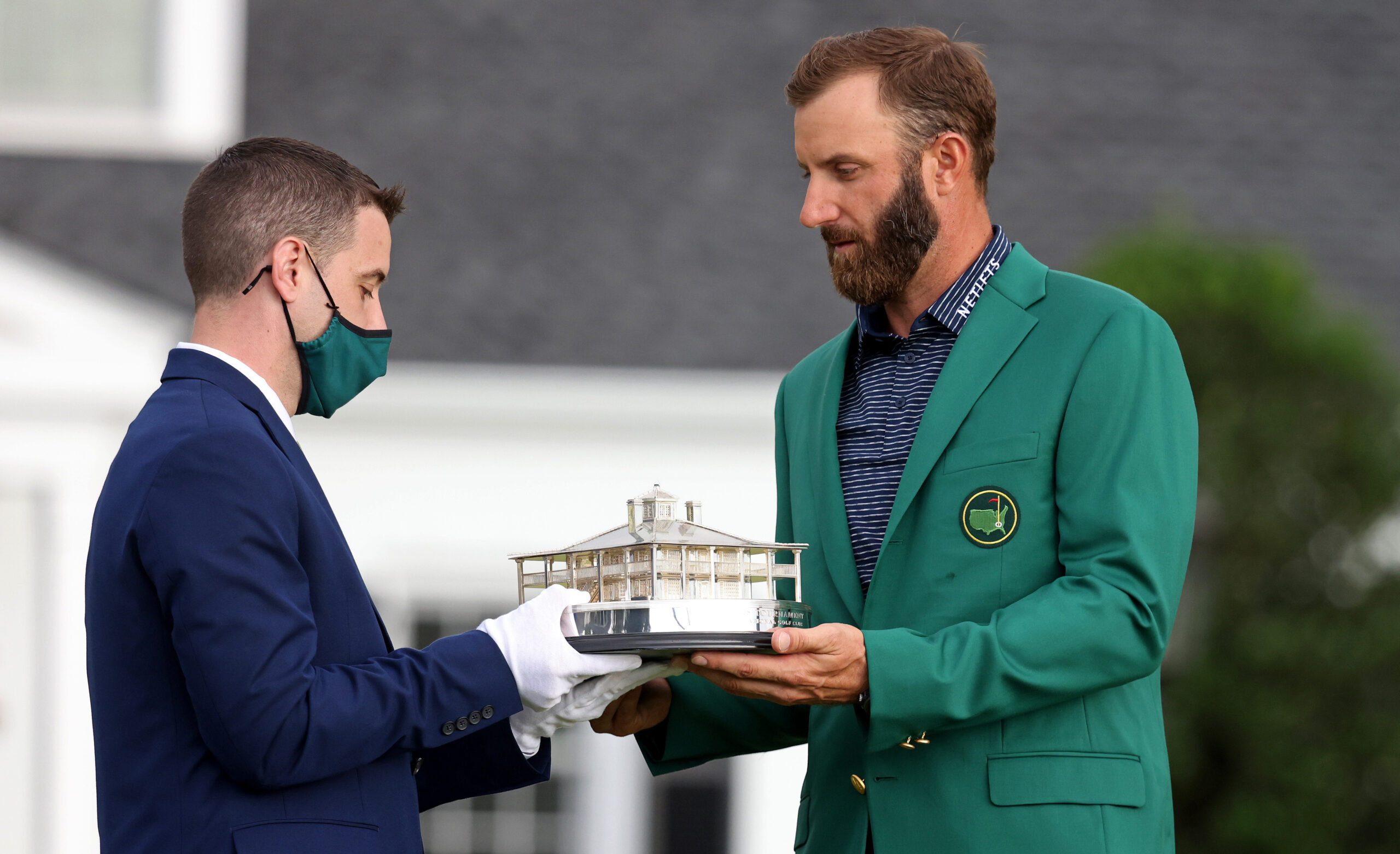
The circumstances surrounding the decisions were unprecedented (the only years the Masters hadn’t been played since it was first held in 1934, were 1943, ’44, and ’45, because of World War II) but, because it was Augusta National, it went off without incident and as smoothly as could have been expected. And a patron/roar-less Masters held at an unusual time of year was certainly better than no Masters at all.
Watching various videos from the week now does seem awfully strange though. Here are three things we’d forgotten about that odd, yet somehow remarkable, Masters.
Tiger Woods was the defending champion.
Oh yeah, of course he was. Because it had happened 19 months previously, the fact Woods had won the year before seemed less of a story than the other aspects of the 2020 tournament. The five-time champion made a promising start with a 4-under-par 68 that put him in a tie for 10th, three shots behind Paul Casey, Dylan Frittelli, and the eventual winner, Dustin Johnson. It was a packed leaderboard at the end of Thursday’s play with Justin Thomas, Justin Rose, Xander Schauffele, Cameron Smith, Louis Oosthuizen, Patrick Reed, Hideki Matsuyama, and a 63-year-old Bernhard Langer all featuring.
Woods followed with a second-round 71 that he completed on the Saturday morning following Friday’s early suspension of play due to weather. At 5-under, he was four back of the five-way tie for the lead held by Johnson, Smith, Thomas, Jon Rahm, and Abraham Ancer.
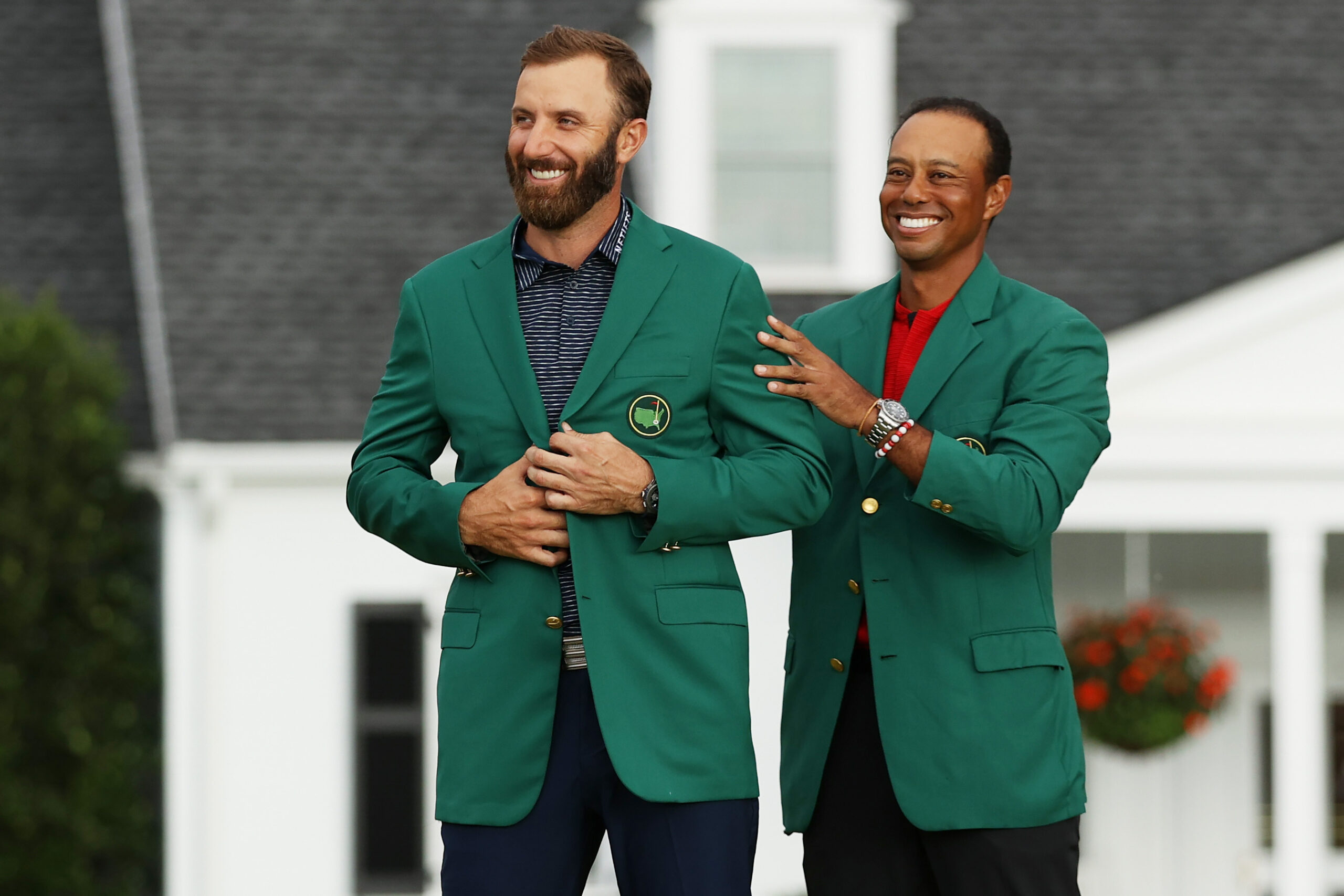
A 72 in the third round kept him too far back to make a charge for a sixth Green Jacket (he was then 11 shots behind Johnson who had fired another 65 to put him at 16-under-par through 54 holes), and a first-nine 37 on Sunday didn’t scare anybody. But though his outward half hadn’t been terribly exciting, his final nine holes would take him and his fans from one end of the stimulation spectrum to the other.
A bogey at the 10th dropped him farther down the field and then, at the par-three 12th, we witnessed a very un-Woods-like passage of play. Fooled by the lack of wind (the notorious swirling breezes at the 12th weren’t a factor), Woods came up short with his tee shot which bounced into the bank between the green and Rae’s Creek and fell back into the water. His third shot from 50 yards pitched well on to the green but spun back into the creek. His fifth flew the green and ended up in one of the two back bunkers and, from an awkward stance in the sand, he caught his sixth shot thin, the ball darting low over the green and back into the water. Another drop, another bunker shot, and two putts meant a septuple-bogey 10 which, you won’t be surprised to learn, was his worst score on the hole in 86 competitive rounds to that point.
What also wasn’t very surprising, perhaps, was that Woods was so shaken into action that he produced an incredible run over the six remaining holes, birdieing five of them to salvage a 76 and complete the four rounds in 1-under-par, 287.
Dustin Johnson shot the lowest 72-hole total in the event’s history.
Johnson began the final round with a four-shot lead and finished with a 68 to record a new Masters 72-hole scoring record of 268 (-20). Cameron Smith and Sungjae Im tied for second five shots back, and 43 players finished the week under par. There had been much speculation in the run-up to the event over how the course would play, and Johnson’s score suggested that not only had he played brilliantly and confirmed he was the best player in the world at the time, but also that the course was considerably easier than it usually is in April.
The biggest difference between the conditions in November and April was how much softer they were. Though the course received 0.6 inches of rain on Thursday, there had actually been significantly less precipitation in the days and weeks prior to the tournament than usual. In October and the first two weeks of November, roughly two inches fell on the course, whereas it typically gets five to six inches in March and April. But with temperatures in the high 50s rather than high 60s and 70s, there was much less evaporation. And the course was likely being watered quite heavily to allow the overseed rye grass on the fairways (that each fall replaces the existing Bermudagrass) to take root.
Augusta National’s bentgrass greens are different, though. Thanks to the SubAir system that sucks away moisture and can regulate the turf’s rootzone temperature, the club can largely determine their speed and firmness. Even so, during the practice rounds, players were saying how much softer both the fairways and greens were playing.
Also helping was the relative lack of wind. Watch the final round replay and you’ll notice some flags are certainly fluttering. But local weather reports say the wind averaged just 5 mph that day.
No words…well, not many.
Perhaps the part of the 2020 Masters that people might have some vague recollection of, besides its dates and the lack of atmosphere, was Dustin Johnson’s interview with CBS’s Amanda Balionis after having been helped into the Green Jacket by Tiger Woods. If you’re hazy on what Johnson actually said, don’t worry, because he didn’t say much. Overcome with emotion, he answered the first question with the somewhat predictable “Dream come true,” and “Always dreamed of being the Masters champion,” etc., but after that, not a great deal made it out of his mouth. He did manage, “I’ve never had this much trouble gathering myself. On the golf course I’m usually pretty good at it, but here I’m not,” but that was about it.
After recognizing that Johnson, probably the last player golf fans would have expected to be so caught up, was unable to say anything else, Balionis wisely congratulated the champion and brought the interview to a fitting close.
Also worth noting is that on the Monday of Masters week, Chairman Fred Ridley announced the club would be honoring Lee Elder, who in 1975 had become the first black man to play in the Masters, by establishing scholarships in his name at nearby Paine College, a Historically Black College. Ridley also invited Elder to be an honorary starter at the 2021 Masters six months later (Jack Nicklaus and Gary Players were the honorary starters in 2020).
What memories stick out in your mind from the November 2020 Masters?


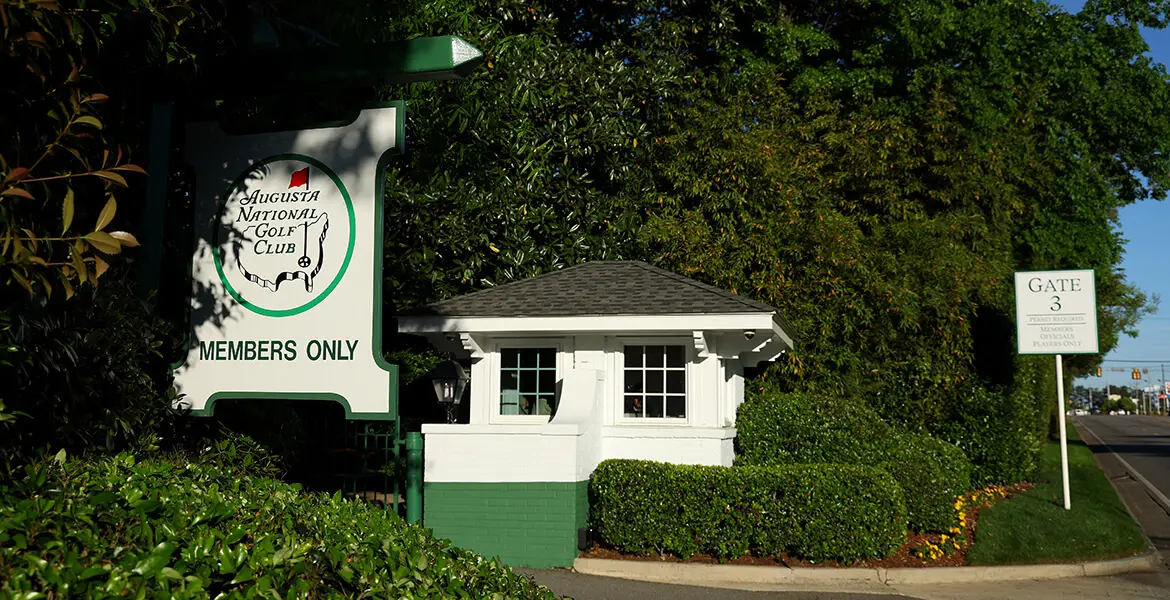
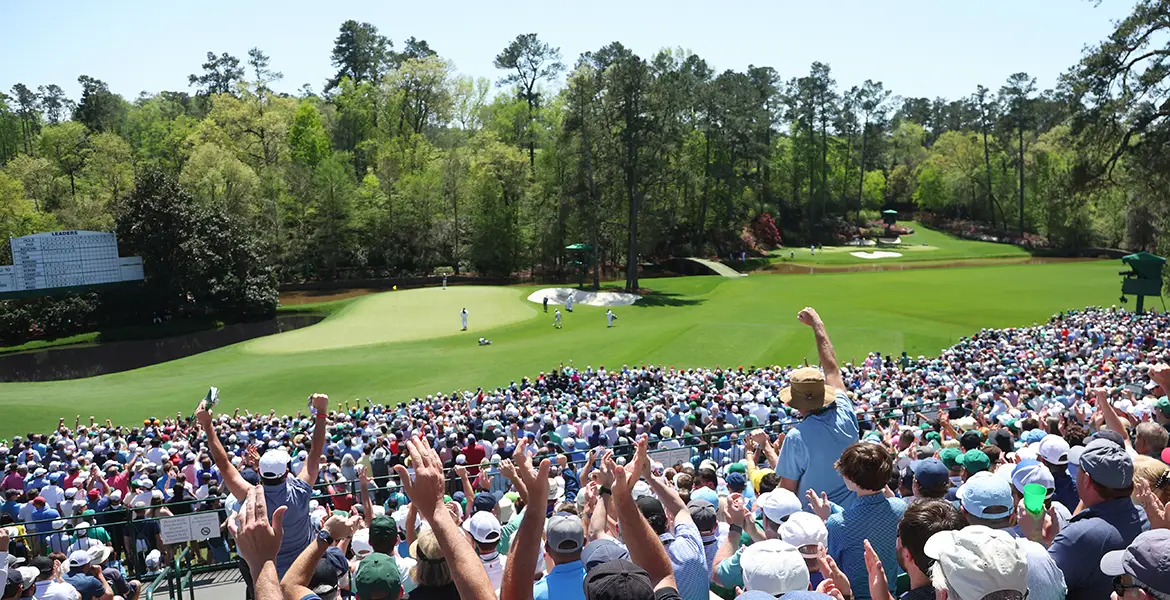
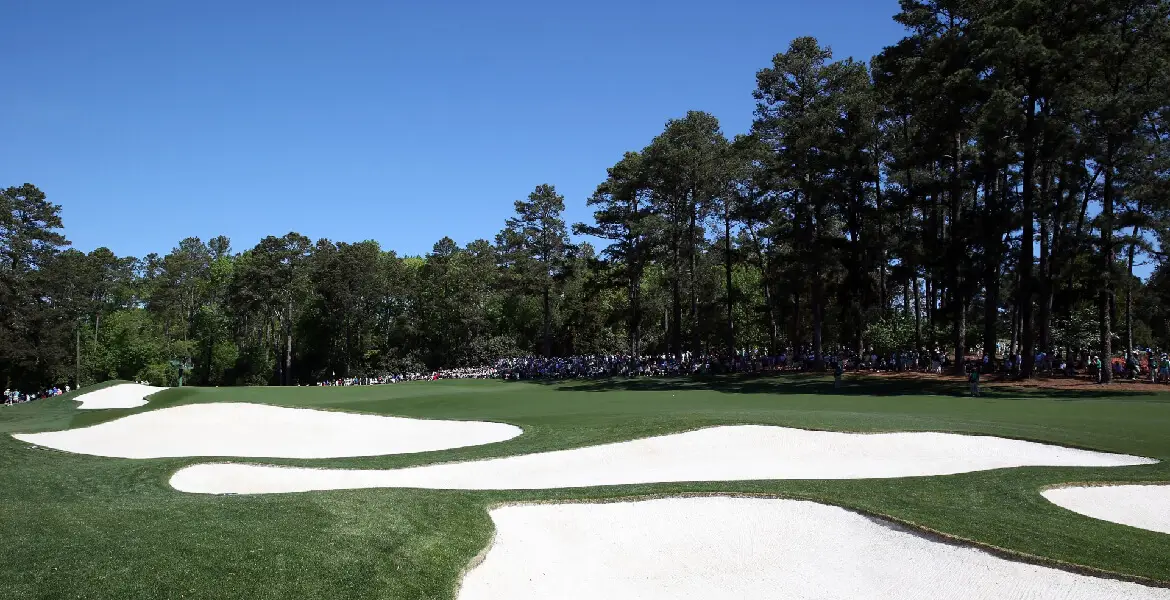

Being there 🙂 !!!!!
In all seriousness. A couple of things.
The first tee. Very few there. Most unsure whether to applaud or not when the players were announced.
The quiet. You couldn’t have a normal conversation without the fear of being too loud.
The course. It was almost like the crew at ANGC wanted leaves on the ground to appear more like fall. In a normal tournament, the grounds are spotless. They think of everything!